You are using an out of date browser. It may not display this or other websites correctly.
You should upgrade or use an alternative browser.
You should upgrade or use an alternative browser.
Essential The Official ESPN Insider Thread (ESPN+)
- Thread starter the cool
- Start date
More options
Who Replied?THASTUNNA
All Star
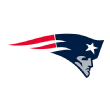
New England Patriots
Grade: A-
The Patriots could have embraced the long-term approach taken by Kansas City and Pittsburgh, their primary challengers in the AFC. They still might have won 12-plus games and kept their edge in the conference. Instead, the Patriots grinded the way Tom Brady does -- as though they had no laurels to rest upon.
"The bottom line is that Kansas City and Pittsburgh, neither one made the impact moves to keep stride with a team like New England, who wins it all but still goes out and makes some pretty impressive moves," a personnel director said.
The other bottom line is that Brady's presence on the roster provides an iron-clad insurance policy against a losing season.
The Patriots supplemented a mostly young roster with veteran additions such as Brandin Cooks, Kony Ealy, Stephon Gilmore and Rex Burkhead. They bucked well-established protocols to do it, trading away draft choices for surer bets at a wide range of price points. Committing millions in guarantees to Gilmore while letting homegrown corner Logan Ryan leave wasn't a textbook move. It did make New England more talented on paper; Gilmore was the 10th pick in his draft class, while Ryan was the 83rd in his.
"When you bring in guys from other teams, you have to be able to teach them," an exec from another team said. "That is a challenge and that is why it has not always worked well for teams that have brought in a bunch of veterans from other teams. Those guys can migrate toward one another when the coach tries to put the hammer down. That will be [Bill] Belichick's challenge."
There was some thought New England might lose top linebacker and defensive signal-caller Dont'a Hightower after not using the franchise tag to keep him off the market.
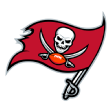
Tampa Bay Buccaneers
Grade: A-
The Buccaneers cannot take credit for O.J. Howard's availability when they selected him 19th overall. But when they had a chance to select a player multiple league insiders had projected as a potential top-10 pick, they did not overthink the situation. They added Howard to an offense that already had welcomed free-agent receiver DeSean Jackson, who remains a unique talent in the NFL.
"That offense is going to be really hard to play against," an exec said. "DeSean has at least a year left, and then you add Howard."
Jackson's reputation as an occasionally disruptive teammate appears increasingly outdated. How will he respond if quarterback Jameis Winston continues to force the ball to Mike Evans? There are worse problems to have.
"I kind of like their offseason, too," a different exec said. "They got the quarterback some legit weapons."
When the Buccaneers won nine games last season, they seemed to reach their ceiling. The offensive talent upgrades made one evaluator suggest that nine victories might be a more realistic floor for Tampa Bay in 2017.
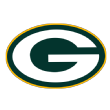
Green Bay Packers
Grade: B+
The Packers desperately needed to upgrade at tight end, running back and cornerback. They addressed all three positions emphatically without extending themselves too far financially. Their deal with tight end Martellus Bennett was especially team-friendly.
"Packers fans bytched when they lost Jared Cook, but Martellus Bennett is a way better player," an evaluator said. "They basically paid what Jared Cook was asking for, for Martellus Bennett. And then they got Lance Kendricks, too. Now they have three tight ends on their roster who would play for any other team."
Losing guard T.J. Lang hurt, but his long-term health was a concern and there are greater sins than not paying top-of-market money on a guard's third contract. In the secondary, the Packers had to figure they could find a Micah Hyde replacement in a draft heavy on talent at safety; they did so with second-round choice Josh Jones.
"I thought they did some really good things," an exec said. "Letting Lang go, they will be OK with that. Kevin King was a really good pick, a definite upgrade over the other young corners they have, and then Martellus Bennett, they got him on a really good deal and that will work well. One of those running backs will end up being OK."
Some called coach Mike McCarthy's loyalty to defensive coordinator Dom Capers remarkable (and not necessarily bad) given disappointing on-field results. McCarthy must figure that personnel deficiencies have driven the Packers' issues on defense, with many of those related to injuries.
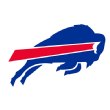
Buffalo Bills
Grade: B+
The Bills finally have a head coach (Sean McDermott) and general manager (Brandon Beane) who appear aligned philosophically. That greatly improves their chances for long-term success, a leading reason Buffalo gets a high grade here. The Bills also recommitted to quarterback Tyrod Taylorfor at least another season after the team's previous leadership wavered on him. Why get worse at the most important position?
"The best decision they made was bringing back Tyrod," an exec said. "Losing [Mike] Gillislee does hurt a little bit. LeSean McCoy had a great year, but it would have been nice to give him more of a breather once in a while, and that becomes harder. Their draft was solid. [Tre'Davious] White, [Zay] Jones and [Dion] Dawkins, everyone agrees they will be pretty good players. Getting [Nathan] Peterman in the fifth was pretty good value. That made sense to me."
The Bills spent heavily for Micah Hyde heading into a draft that was packed with talent at the safety position. McDermott, a former defensive backs coach, must have really wanted a sure bet in the secondary after letting Gilmore walk out the door.
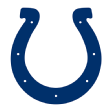
Indianapolis Colts
Grade: B
The Colts did nothing spectacular this offseason unless you count landing potential top-10 overall pick Malik Hooker with the 15th choice in the draft. Unspectacular seemed to be the point as Chris Ballard's hiring as GM set the team on a more deliberate course.
"They did a nice job with a lot of sensible picks, sensible signings -- sort of the opposite of what they have done in recent years," an exec said. "John Simon is a good player that they got at a good price. In the draft, [guard/tackle] Zach Banner is just an enormous man who should play for a long time if his hips are OK. [Running back] Marlon Mack should be an interesting contributor for them."
Indy needed to upgrade its pass protection for quarterback Andrew Luck. Ballard resisted paying premium prices for one of the veteran tackles on the market. That was probably smart in the long term. In the short term, no one is going to say the Colts fixed all their problems in one offseason.
“
They did a nice job with a lot of sensible picks, sensible signings -- sort of the opposite of what they have done in recent years.
”- An NFL executive
"[Ballard] is trying to get younger and kind of grow together as opposed to making an impact with one or two guys by spending a lot of money," an evaluator said. "It is going to be an ongoing thing with them. [Ballard] is going to improve with nickels and dimes and then the next go-round in the draft, he'll hit it more and then in free agency next year, he will hit it a little bit stronger."
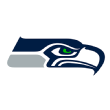
Seattle Seahawks
Grade: B
The Seahawks got Eddie Lacy to approximate Marshawn Lynch. They bought insurance for Earl Thomas' tibia by signing 2016 Buccaneers starter Bradley McDougald to a one-year, $1.8 million deal that was far below McDougald's anticipated market. They sparred to an offseason draw with top corner Richard Sherman. They stockpiled draft choices, ultimately using two in the second round and four in the third. No team in the common-draft era (since 1967) has used more picks in the second and third rounds. Only the 1976 Seahawks, 1994 Rams and 2009 Patriots have used as many.
"That is amazing," an exec said. "That is a lot of bodies. What they tried to do was rebuild the backbone of their team, the rank and file. Did they do that? Maybe they did, but they didn't find the superstars that get you to 13-3. I'm not sure anyone can do what they did in 2010 and 2011. The odds are against it no matter how good you are. There is a plan. When you have a plan, there is a chance."
Luke Joeckel to a one-year, $8 million deal even though Joeckel was not consistently effective even before suffering a serious knee injury last season. What was up with that?
"We were all in it for Joeckel, too," another exec confessed. "Joeckel had a market."
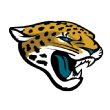
Jacksonville Jaguars
Grade: B
The Jaguars will eventually have to decide whether to stick with Blake Bortles at quarterback. In the meantime, they've made moves to diminish their reliance upon him. Offseason commitments to the ground game do not get much stronger than hiring Tom Coughlin and Doug Marrone before using a top-five pick on Leonard Fournette. Meanwhile, the addition of Calais Campbell could put the defense over the top. All signs point to fewer pass attempts per game for Bortles.
"They made progress in getting an identity," an exec said. "Are they better? I'm not saying they are, but one of these years they are going to go like 10-6. I don't think it's this year. I think it's when they get great play out of the quarterback."
Campbell was the consensus best defensive player available in free agency. He also cost $15 million annually.
"Jacksonville spent the most guaranteed money over the last five years and they have the worst record," an analytics director said. "They keep doing the same thing over and over. I do love Calais Campbell."
There was no consensus that Fournette was the best offensive player in the draft, but he was the first offensive player selected who was not a quarterback. Adding him and Campbell would seem to qualify the Jaguars for a Grade A offseason, if only there weren't so much weariness.
Cam Robinson was one of the best picks in the draft."
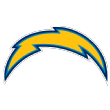
Los Angeles Chargers
Grade: B
The change from Mike McCoy to Anthony Lynn gives the Chargers a head coach with a stronger personality and, presumably, better credentials as a motivator. While Lynn will also bring ideas for the offense, the decision to stick with Ken Whisenhunt as offensive coordinator makes the head-coaching change less disruptive.
Lynn has never been a head coach and he has less than one full season as a playcaller, but both of his coordinators have head-coaching experience, so there is some protection. New linebackers coach Richard Smith is a three-time NFL defensive coordinator entering his 30th season in the league. It appears, then, that the Chargers have a chance to harness Lynn's strengths without suffering too much from his lack of experience in the role.
"I think maybe there is a little change of culture from a standpoint of accountability with the players," a veteran coach said. "Anthony Lynn also could be a little stronger personality as far as dealing with the front office. Addressing the offensive line and doing some of those things was a good thing for them."
There is not much to love about committing $13 million in 2018 guaranteed money to left tackle Russell Okung, except that there's a decent chance Okung will upgrade the position. Getting Okung before the draft made sense given the lack of appealing alternatives in the draft, combined with the Chargers' clear need for offensive weapons.
“
I think maybe there is a little change of culture from a standpoint of accountability with the players.
”- A veteran coach on the hiring of Anthony Lynn
Tyrell Williams and now Mike Williams, and with Keenan Allen returning, San Diego has a lot of pieces there," an exec said. "They have become really hard to defend. I think the question for them is: Is [Philip] Rivers still great? Because the last half of these last two seasons, he has not been great."
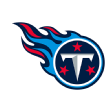
Tennessee Titans
Grade: B
The 2016 draft-day trade with the Rams put the Titans in prime position to address needs this offseason. The draft could have gone better if Tennessee had been able to trade down from the fifth overall slot, but it made sense for the Titans to emerge from the first round with a receiver (Corey Davis) and a cornerback (Adoree' Jackson).
"I really liked Tennessee's draft and then Logan Ryan should help them right away" an exec said. "I think they will be better this year with the additions on offense and in the secondary. I felt Corey Davis was the best receiver in the draft, Taywan Taylor is a really good player and Adoree' Jackson looks like he should start for a long time even if he is sort of an average corner who has some size questions."
Marcus Mariota's ankle is one problem. The Titans are a team with high expectations, an injury-prone starting quarterback who is still injured and a backup in Matt Cassel who's on the shelf until camp and hasn't been an effective player since Charlie Weis was coaching him in 2010. There's a line of thinking among some evaluators that good teams with injury-prone starting quarterbacks are the ones that should actually invest in better backups. Tennessee made no move to get one. As one head coach put it, a well-placed veteran backup can serve as a conduit between coaching staff and the starter. But as another head coach countered, that is also a great way to never develop another quarterback.
"I have Tennessee as the best projected team in the AFC South," an evaluator said. "I just think everything is trending up for them."
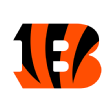
Cincinnati Bengals
Grade: B-
The Bengals have been playing catch-up on offense after losing key wide receivers in free agency last offseason and key linemen more recently.
"They got decimated a little bit in free agency, but they regathered and restocked in the draft, which you have to do," a former GM said. "That is part of the NFL."
Blazing wideout John Ross was a bit of a surprise selection with the ninth overall pick. Running back Joe Mixon was a controversial pick in the second round. Would execs from other teams slam Cincy for selecting a player best known for punching a woman in the face in a 2014 assault caught on surveillance video? Not all of them would.
“
I think their season really comes down to, can Jake Fisher and Cedric Ogbuehi play tackle?
”- An NFL executive
"It is interesting because they are truly a hands-on family franchise," a longtime exec said. "They do a pretty good job of tolerating players with issues, guys like Adam Jones. I just think that is how they are. It kind of makes more sense for them than it might for other teams. That is [owner] Mike Brown believing in somebody."
The division-rival Steelers might have the best skill-position players in the league. Cincy has the potential to be in that conversation as well.
Kevin Zeitler. That is a big loss. I think their season really comes down to, can Jake Fisher and Cedric Ogbuehi play tackle? If those guys can play tackle, then that offense is going to be a nightmare. And if those guys cannot play tackle, they do not have answers on the roster and I don't know what they are going to do."
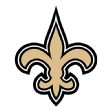
New Orleans Saints
Grade: B-
The offseason plan for the Saints was clear: Improve the defense. Trading top deep threat Brandin Cooks to New England for the 32nd overall choice seemed like a big part of that plan. In the end, however, the Saints used that pick for right tackle Ryan Ramczyk. That move was easier to justify after cornerback Marshon Lattimore fell to New Orleans at No. 11 (four of five league insiders polled before the draft had Lattimore going in the top 10).
"I kind of like what they did," an exec said. "They got a guard and a tackle, they got a corner and then losing Cooks to New England is not that big of a deal because they have Michael Thomas and they kind of play with anybody at receiver."
Reviews were mixed. There was more excitement for second-round running back Alvin Kamara than for veteran addition Adrian Peterson. But if Peterson does recapture some of his previous form, the Saints' minimal investment in him could signal a shift away from New Orleans' disproportionate dependence on Drew Brees' aging arm.
Junior Galette. It feels like we have been through this before and that will be interesting to see how that goes."
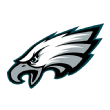
Philadelphia Eagles
Grade: B-
An analytics director who remains unconvinced on Carson Wentz ultimately said he projected significant gains in production for the second-year Eagles quarterback based on Philly's offseason moves. New receivers Alshon Jeffery and Torrey Smith probably will not grow together with Wentz for years to come, but their combined 2017 cap charge is less than what Jeffery earned on the franchise tag last season.
"I did like some of the pieces they added, including the little running back [Donnel Pumphrey] who broke Marshall Faulk's records at San Diego State," a personnel director said. "I think everything there will move toward being more productive, especially on offense. We will see what happens on defense, if they can just hold up on defense."
A word of warning from another evaluator: "Alshon Jeffery and Torrey Smith are injury-prone guys. They will be injured."
Jeffery has missed games across multiple seasons. Smith, 28, has not. The four games he missed last season are the only regular-season games he has missed in his career. He did undergo hernia surgery early in his career.
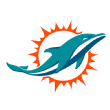
Miami Dolphins
Grade: B-
The most pointed criticism for the Dolphins this offseason is that they spent too much money to keep their own players. That is progress for a team that previously spent too much money for players from other teams, which is usually riskier.
Cameron Wake, Kenny Stills, Andre Branch, Reshad Jones and Kiko Alonso were the big re-signings for the Dolphins. Getting Stills back after letting him test the market was a surprise. Paying $7 million a year for Alonso now was a hedge against having to pay him $10 million annually as a free agent next offseason. The $8 million a year Branch (5.5 sacks in 2016) got seemed like a lot and was widely criticized, but it was less than what Jabaal Sheard (5.0 sacks) got from Indy, and Branch is already known to Miami.
Three notable players Miami brought in from elsewhere -- tight end Julius Thomas, defensive end William Hayes and safety T.J. McDonald -- carry zero salary-cap ramifications beyond this season.
"What's really notable right now is you have an offensive-minded head coach [Adam Gase] who is a playcaller and is empowered after a 10-6 first season, and they are drafting defense heavily, which is what they needed to do," an exec said. "It can take some discipline to do that."

New York Giants
Grade: B-
After reveling in free agency over the past couple of offseasons, the Giants took a more conservative approach in 2017, content to re-sign Jason Pierre-Paul against outside expectations. That looked like an excellent move for a team hoping to maintain what became a top-five defense last season.
Using a third-round pick for developmental quarterback Davis Webb was another indication the Giants weren't focused on quick fixes.
"I don't think they really helped themselves," a personnel director said. "They are counting on what they did the last two years as coming together for this year."
Insiders disagreed over whether tight end/receiver Evan Engram would be worth the first-round pick invested by the Giants. One evaluator thought Engram would make the offense much more dynamic. A coordinator thought the Giants would have been wiser adding someone to help with their running game.
“
I don't think they really helped themselves. They are counting on what they did the last two years as coming together for this year.
”- A personnel director
Adding Engram and veteran receiver Brandon Marshall should help Eli Manning, at least. Manning developing a rapport with Marshall has the potential to revive the quarterback's career, one head coach suggested. That was not a universally embraced thought.
"They must feel as though they had what they needed to compete," the personnel director said. "They spent a lot of money in free agency the past couple years. They must feel it is more a chemistry issue than adding personnel. I do not know that Brandon Marshall is the answer."
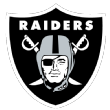
Oakland Raiders
Grade: B-
Another step forward by quarterback Derek Carr would take the Raiders closer to where they want to go ultimately. To that end, Oakland acquired Marshawn Lynch from Seattle. The Raiders also made a move that appeared curious at the time, firing offensive coordinator Bill Musgrave following a 12-4 season.
"I think they were going to lose the younger guy [2016 QB coach Todd Downing] and they really liked him," a coordinator from another team said. "He was the one doing a lot of the work and he had the relationship with the quarterback. That seems to be the trend now in the league if you've got a young coach that you think is an up-and-comer and you don't want to lose him. That is what I saw them doing."
It'll be tough to quantify the quarterback-coordinator change in Oakland this season, but the Raiders thought the move could pay off. What about Lynch? He sat out last season, missed time to injury in 2015 and recently turned 31. Will he have a good year? An exec paused before answering that question.
"I say yes," the exec said. "He has a good offensive line, a good quarterback who can throw the ball. It's not going to be all on [Lynch]."
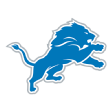
Detroit Lions
Grade: B-
The Lions spent big on their offensive line and should realize a significant upgrade. They will need T.J. Lang to stay healthy, but between Lang and tackle Rick Wagner, the right side of the line can become a strength.
"Everyone in the division has made some strides and Detroit has probably made the biggest jump," an evaluator from another NFC North team said. "They got guys who will fit their scheme defensively. Wagner is not an elite player, but he is a good player and will be a solid starter for them. They improved the overall tone of their front. I think their running game is always going to be a question, but they have some skill guys and should be able to protect the quarterback."
There was some feeling the Lions' focus on scheme fits led to them sacrificing talent, causing one evaluator to call their draft class the NFL's worst if considered in a vacuum. Of course, the players Detroit drafted will not play in a vacuum. They will play for the Lions.
"It was kind of a Patriots-esque draft that way," this evaluator said.
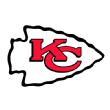
Kansas City Chiefs
Grade: B-
Trading up 17 spots in the first round to select quarterback Patrick Mahomes II with the 10th overall pick will ultimately define this Chiefs offseason. It will not help Kansas City keep pace with the best teams in the AFC this season. The trade also will cost the Chiefs their 2018 first-rounder, an insurance policy of sorts. It's as though Kansas City realized it had to pounce on a quarterback Andy Reid thought could be a game-changer for the long term.
"Most of the people they acquired were for future reference," an evaluator said. "Kansas City almost has to survive this year to actually reap the benefits of the draft. If they have some injuries early that expose their lack of depth and things fall apart, then it really becomes critical because you did not address your biggest needs this offseason."
No one said moving up for a quarterback would be cheap for a team coming off another playoff season.
"It was a bold move by bold men who have been pretty successful," an evaluator said of Reid and GM John Dorsey. "I'm not sure I like the quarterback, but at least they are doing something when they don't even need that guy yet."
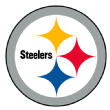
Pittsburgh Steelers
Grade: C+
Similar Steelers offseasons probably would have earned higher marks in the past, but with New England setting a more aggressive pace, Pittsburgh's lower-key approach gave the impression that the Steelers lost ground they could not afford to lose. Of course, what works for Belichick and Brady in New England doesn't work everywhere else. The Steelers have been successful for a long time doing what they did this offseason.
"Pittsburgh never seems to make the big impact move," a personnel director said. "They seem to just keep trying to get guys who fit into their locker room or fit into their scheme. It is almost like they are a little bit of plug-and-play and not really willing to stretch out and put themselves out there."
“
They rely heavily on their coaching. No team is more constant in coaching except for maybe New England.
”- A personnel director
The Steelers knew they could get better on offense simply by sitting back and waiting for the league to reinstate receiver Martavis Bryant. That happened. Beyond that, the Steelers used a first-round choice on a Joshua Dobbs. They used the franchise tag to buy time with running back Le'Veon Bell.
"Pittsburgh is one of those teams that likes to plug people in and keep moving and they rely heavily on their coaching," the personnel director said. "No team is more constant in coaching except for maybe New England."
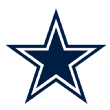
Dallas Cowboys
Grade: C+
The Cowboys appeared to get a little bit worse at multiple positions as they showed restraint in free agency and funneled their first-round pick (DE Taco Charlton) toward a position group that has plagued them for years.
"The Cowboys' biggest problem is going to be overcoming their poor selections the past couple years, especially on the defensive line," a personnel director said. "They have some real issues there with Randy Gregory and his suspension and now David Irving has a suspension coming as well. They just can't seem to get out of their own way, and even with adding Taco, they probably need to add another defensive lineman."
This evaluator thought the Cowboys would overcome losses on the offensive line in part because Dak Prescott has some seasoning.
"I think their offense has a chance to be a little bit more mature," he said. "They have a big three with the quarterback and the wide receiver and the running back. The problem will be, can they stop people on defense, partly because of their bad decisions on the defensive line and then the youth in their secondary."
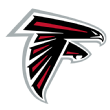
Atlanta Falcons
Grade: C+
A veteran GM who thought the Falcons deserved a C grade said it's "not a bad C" because Atlanta was "at the head of the class already and maintained" its position from a personnel standpoint. Several other insiders thought Kyle Shanahan's departure and overall coaching turnover made this a rough offseason for Atlanta.
"I can't remember [in recent years] a Super Bowl team having that type of coaching turnover on both sides of the ball," an exec said. "To think that going from Shanahan to Steve Sarkisian is going to be some sort of upgrade, there are a lot of different objections to that premise, whether you want to do off the field, on the field, whatever."
Keeping Shanahan wasn't an option. Firing defensive coordinator Richard Smith was. Dan Quinn's presence as a defense-minded head coach could provide some cover as first-year coordinator Marquand Manuel grows into the role.
"Quinn fired Richard Smith because he was afraid he was going to lose Marquand and he needed somebody that knew the back end, the secondary," a coordinator from another team theorized. "I think Richard was a good, solid defensive coach and I don't know who he has got there that can take that place. That is a little bit worrisome."

Washington Redskins
Grade: C
The Redskins seemed to be reeling early in the offseason with GM Scot McCloughan leaving and quarterback Kirk Cousins increasingly embittered without a new contract. Washington survived those crises and managed to salvage the offseason.
"They made a bunch of signings where I go, 'Damn, that is a good deal and I wish they hadn't signed him,'" an exec said. "Whether it was [D.J.] Swearinger or Terrelle Pryor or even Jonathan Allen, who is not a guy you want to play against. Fabian Moreau is a good player, [Samaje] Perine is a good player, [Montae] Nicholson is a good player. They did well."
Losing offensive coordinator Sean McVay to the Rams is one offseason change to watch. A coordinator from another team thought McVay brought a level of scheming that the Redskins would be unable to replicate, even with a competent replacement in Matt Cavanaugh and an offense-minded head coach. This coordinator said he saw the Redskins do things offensively with McVay at the controls that went beyond the norm.
"The way they attacked teams from the standpoint of attacking their coverages -- a quarters beater with a post over the top, plays like that -- those were things where I said, 'Wow, that was pretty good,'" this coordinator said. "McVay had a good feel for what Cousins could do and Cousins had a good feel for what the expectations on these plays were. For instance, when you attack a certain defense and you know you are going to get a certain coverage and you have a certain scheme route, it is great to draw that up, but not every quarterback can visualize that and see it on the field and make the throw or attack it. I think Cousins can do those things, but I don't know that [they] can give him those things to do [without McVay]."

Los Angeles Rams
Grade: C
This will become an "A" offseason if the Rams' coaching change and left tackle acquisition salvage quarterback Jared Goff following a rough rookie season. Sean McVay potentially gives the Rams the dynamic offensive coach they've needed for years. The concern is that McVay is 31 years old and therefore not yet ready to handle the many other responsibilities that come across a head coach's desk in the NFL.
"There are so many things [McVay] cannot know about that job and what it takes," a former head coach said. "They have some veteran guys, especially on defense. If they are struggling, it is great to say you have a lot of energy and all that, but some of these guys are older than him."
Not quite. While McVay is four years younger than left tackle Andrew Whitworth, the Rams' No. 1 signing in free agency, none of the team's defensive players is older than the head coach. Connor Barwin is close to the same age, but younger. Several others are in the same demographic. That was surely a consideration when the Rams hired veteran assistant coaches, notably Wade Phillips.
"It was tough for the Rams this offseason because they were short on draft picks [following the Goff trade last year]," an exec said. "You don't get a big infusion there. I do like the coaching better, and I like Wade. Hopefully, you roll the dice and have a young, dynamic offensive coach. Maybe that helps the quarterback."
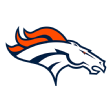
Denver Broncos
Grade: C
The Broncos needed to address their offensive line. They used their first-round pick on tackle Garrett Bolles. They picked up guard Ronald Leary from the Cowboys and tackle Menelik Watson from the Raiders. They also brought in Jeff Davidson from the Chargers to coach the unit. Will it be enough?
"I just have a feeling [Leary] is going to be totally exposed in Denver," an evaluator said. "In the unit with Dallas, you got probably the best center and the best tackle in the league, and that covers him up. You are not going to get that in Denver. Leary also has some knee issues that teams were nervous about."
“
I think you are going to get what you pay for: B-level players, and hope your staff can scheme around them.
”- An NFL evaluator
The general feeling among insiders was that Denver would remain good enough on defense to compete, but that the offensive line and quarterback situations remained questionable. GM John Elway seems almost as willing to acquire and cut coaches as he's willing to acquire and cut players. He is betting that the Broncos will get more from their existing personnel after their latest coaching shakeup.
"They made interior defensive line moves," an evaluator said. "They are all budget-type Malik Jackson, who was a fifth-round pick -- suggests the Broncos have a chance to make that happen.
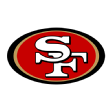
San Francisco 49ers
Grade: C
The 49ers might have been the volume leader in offseason moves. They hired a new GM out of left field -- John Lynch called them -- and hired a head coach who was a hot candidate. They ditched every quarterback from the 2016 roster, adding four newcomers to replace them. They stockpiled free agents with abandon. It was another wild offseason ride for a team that plays its home games in a stadium near an amusement park.
"They signed the fullback [Kyle Juszczyk] for the most money ever for a fullback, and then they hoodwinked the Bears in the draft," a former GM said. "They finagled and got the kid from Alabama with their second first-round pick [Reuben Foster] and all of a sudden people say the worst case is, he won't play this year. I hate to say it, but the worst case is that he never plays. But he might be great if he does. You want to solidify things and to me they are kind of all over the board."
An exec said he found the 49ers' myriad signings in free agency to be confusing. All agreed that the price paid for linebacker Malcolm Smith was absurd.
"I don't know if John Lynch realizes there is an actual thing called a draft to get players," an evaluator said a couple of weeks into free agency. "They are signing all these players, like 11 guys, and they are all B-level and C-level players. Dude, did you know you are signing a bunch of league replacement players at $1-2 million a year, maybe even more with the $4 million fullback? You can draft a replacement player at league minimum in the fourth round. Why are you spending?"
The counter to that is, why not? It's not like the 49ers mortgaged their future by signing a Brian Hoyer as their projected starter.
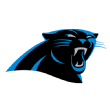
Carolina Panthers
Grade: C
First-round pick Christian McCaffrey is almost universally liked by coaches and evaluators alike. However, coaches do think the Panthers would be much better positioned to utilize him if their passing game were predicated on timing.
"I just don't see that offense," an offensive coordinator said. "Mike Shula is going to have to get incredibly creative. Cam [Newton] is not a real accurate passer. Some of the precision stuff that Christian McCaffrey can do, whether it's slant routes from the slot or option read routes on the back side, you've got to be able to take that ball and pin it to them. Cam hasn't done that, and it worries me that he is missing all spring [following surgery] and he is only going to have a training camp to get up to speed."
An exec used the term "mind-blowing" to describe the five-year, $55.5 million deal Carolina paid to former Vikings left tackle Matt Kalil.
"I do think a liability for them is going to be their offensive line, still, which has been their Achilles' heel, the tackle spot," an evaluator said. "They addressed it with Kalil, but we will see if they really addressed it with Kalil. That is an example of a signing that could backfire on them."
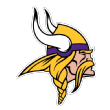
Minnesota Vikings
Grade: C-
It was a bad year to be desperate for offensive line help, but the Vikings understandably felt as though they needed to act aggressively. The question is whether having Riley Reiff at left tackle and Mike Remmers at right tackle will make enough of a difference.
"For a lot of these teams, the question is, 'Will their tackles hold up?'" an exec said. "A lot of these teams have one decent offensive tackle, one who they are hoping is a low- to mid-level starter and then they have no idea who the third guy is going to be. Tackle depth is going to determine the fates of a lot of these teams."
“
Minnesota, I think they are starting to go backwards just a little bit.
”- A personnel director
That could be especially true for the Vikings given their starting quarterback's limited mobility. Sam Bradford doesn't create much on his own.
Dalvin Cook], but I don't think he is going to have the impact he had at Florida State. They are going to play good defense and try not to turn the ball over."
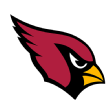
Arizona Cardinals
Grade: C-
There was no way the Cardinals could replace what they lost when Calais Campbell hit the market and signed with Jacksonville. They could have shown greater interest in keeping him, but coach Bruce Arians was on the record saying he thought Campbell should have been a more consistent performer. Re-signing Chandler Jones was instead the focus.
Arizona did replace safety Tony Jefferson with second-round pick Budda Baker, but for a team looking to win before Carson Palmer runs out of time, this offseason looked like a net loss for talent.
"They could kill it in the comp picks in 2018, but that is a lifetime away," an exec said. "I'm not a fan of where they are headed. Should they have lost Calais Campbell?"
The Cardinals' four-year, $28 million deal for Jermaine Gresham puzzled some in the league, especially while better players were leaving the roster. Arizona could still improve in the standings -- not by improving from a talent standpoint, but simply by avoiding some of the ridiculous special-teams breakdowns that proliferated in 2016.
"They had a lot of personnel losses and they didn't really get the offensive line right," an exec said.
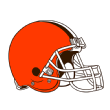
Cleveland Browns
Grade: C-
The Browns are paying a combined $20.5 million per season for guards Kevin Zeitler and Joel Bitonio after signing both to long-term deals. That is the highest figure in the league. Meanwhile, they have Cody Kessler, $16 million man Brock Osweiler and DeShone Kizer at quarterback. Other teams do not sound envious.
"Zeitler won't have to do s--- for the Browns on a third of their plays because he's a guard and he'll be on air, and they paid him $12 million a year," a coach from another team said. "It is like paying a defensive tackle. You don't do it. How many points did Zeitler have [in 2016]?"
That is a harsh assessment and not necessarily fair. At best, Cleveland has used free agency to help build a solid foundation for its offense, much as Oakland has done. It's still an interesting criticism to consider when the defending Super Bowl champion Patriots are paying a league-low $1.48 million in combined annual average salary for their starting guards, Joe Thuney and Shaq Mason.
"Our fans are going apes--- that we haven't signed a bunch of offensive linemen," an evaluator from another team said. "Our head coach believes we can just scheme around it."
Meanwhile, Cleveland's move to bring in defensive coordinator Gregg Williams drew more favorable reviews from insiders. The Browns' inability to flip Osweiler immediately after acquiring him and a second-round choice from Houston did not go over well, although something could still happen before the season.
"I think they still will flip him," an exec said. "I think they are going to pay even more of his salary where he is only, say, a $2 million player, and then they will trade him for something. This is Plan B. Plan A was to take his salary down to $8 million and trade him right away. Plan C is that he is on their team or they just outright cut him. That could very much happen."
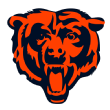
Chicago Bears
Grade: D+
The Bears joined the 49ers in making a flurry of moves involving mid- and lower-level veteran free agents. Unlike San Francisco, the Bears bet big on a couple of quarterbacks, especially second overall pick Mitchell Trubisky. Of course, this Bears offseason will look much different if Mike Glennon and/or Trubisky become front-line players. The grade suffers for now because the strategy seemed to be an odd mix of planning for the long-term future and scrambling to plug holes by questionable means.
"They are trying to find lightning in a bottle with all these signings," an exec said. "Sometimes you get lucky and go 7-9 or 8-8 to save your job. That is all you're trying to do. Then you go back to 4-12 the next year."
In the Bears' defense, they ultimately recouped much of the draft capital they sent to San Francisco in the trade-up for Trubisky. That move was unexpected after the Bears paid starting money to Glennon in free agency. An evaluator said he thought the Bears would exceed outside expectations because Glennon will avoid turnovers.
"I am totally cool with the Glennon signing and will never object to someone spending on quarterbacks or investing in quarterbacks," a different exec said. "But the rest of their signings look like they are just scrambling to get to 6-10, 8-8. I don't see many good players that they added. It looks like a lot of mediocre players on mediocre deals."
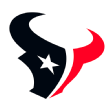
Houston Texans
Grade: D
Getting out from under the Brock Osweiler contract required creativity and the Texans' willingness to part with a second-round pick. That was a victory, but it didn't necessarily make the Texans better, especially with their defense suffering personnel losses that could put additional pressure on the offense.
"I view Houston as the worst team in the AFC South, going from the best to the worst," an evaluator said. "It is not like the jump was that big because they were only a nine-win team to begin with. Their defense is still kind of there, but it isn't, because they did lose A.J. Bouye. Their front seven is obviously really good, but their back end is a huge question mark. I have them as the worst safety group in the entire NFL right now, so corner and safety is a giant liability for them."
Maneuvering to select quarterback Deshaun Watson in the first round could ultimately make 2017 a pivot point for Houston. It's just hard to bank on most rookie quarterbacks emerging in the short term.
“
I view Houston as the worst team in the AFC South. ... Their defense is still kind of there, but it isn't, because they did lose A.J. Bouye.
”- An NFL evaluator
"I think the other AFC South teams had good offseasons," an evaluator said. "The idea of Houston doing absolutely nothing is going to be interesting to see how that works out."
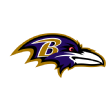
Baltimore Ravens
Grade: D
It's tough finding insiders excited about the Ravens' direction over the past few seasons, including this offseason.
"It's like they expect [Joe] Flacco to regain his magic when he won the Super Bowl, like they expect him to carry them," a former GM said.
That wouldn't be likely to happen even if Baltimore surrounded Flacco with dynamic weaponry. It's less likely to happen with Breshad Perriman taking over for the retired Steve Smith, despite recent optimistic reports from offseason practices.
"That is a major question and their running backs are not great and they are counting on Mike Wallace, who is getting up there," an exec said. "They have all these tight ends who are constantly injured. Their draft, I didn't love. Marlon Humphreycan't really find the ball. Tim Williams is another nightmare-on-the-field, nightmare-off-the-field type of guy. And then Danny Woodhead is another one of these old guys that they are signing."
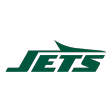
New York Jets
Grade: D
The Jets will go into the season with Josh McCown and Christian Hackenberg as their top two quarterbacks and a roster generally in disrepair. That should put the Jets in position to select a quarterback early in the 2018 draft. Will their current leadership survive another disappointing season?
"I do not understand it," a personnel director said of the Jets' plan at quarterback. "Maybe they think [Hackenberg] is going to really be a guy."
May and June is the time of year when the Hackenbergs and Breshad Perrimans of the NFL world are said to be progressing, but tackle football is still more than two months away. It's hard to see the Jets having anything other than the fourth-best quarterback and fourth-best roster in the AFC East this season.
"Jamal Adams is a really good player," an exec said of the Jets' first-round pick. "Everyone would love to have him, but Marcus Maye in the second was one of the most shocking picks to me, that he went 39th. At the end of this year, they are probably going to look at that roster and go, 'Where is the talent?' And they will probably have to start over. I don't know why they didn't take another quarterback. It's not like these guys they were taking were guys you couldn't pass on."
Keith Law's 2017 Big Board: Explosive pitchers top draft list
You’ve probably heard by now, from me or from others who cover the draft, that this year’s class is weaker than normal. I still believe this is true, perhaps even more today than I did a month ago, now that I’ve spent more time looking at the talent likely to be available in the second and third rounds (and beyond, for a few names).
The class is just fine at the top, although it lacks a standout, lead prospect like a Bryce Harper or even a Gerrit Cole. Teams drafting 2-5 will probably be perfectly happy with whom they get. But the crop of players for teams’ second and third picks is definitely worse than it was a year ago.
It’s not a huge high school pitching crop, but since there aren’t many up-the-middle prospects in the collegiate or high school ranks, the few good prep arms available should fly off the board before we get far into Round 2. And there just aren’t as many good college starting pitchers, even if we’re generous about whom we call a starter (that is, plenty of these guys look like future relievers), which removes an avenue of safety for a lot of teams who like to default to that group, often as a means of portfolio balancing: "Hey, we took a risky high school kid with our first pick, let’s balance him out with a nice safe college starter."
Sorry, Charlie, but that’s not going to work this year either.
Yet history tells us even "bad" drafts produce plenty of big leaguers; they just might not come from the very top of the draft.
The 2000 draft, maligned at the time and for years after as one of the worst drafts in memory, has produced eight 30-WAR players, including future Hall of Famer Chase Utley (taken 15th overall), fourth-rounders Cliff Lee and Yadier Molina and 20th-rounder Jose Bautista. Ninth-rounder Edwin Encarnacion could join that group. And the first overall selection, criticized at the time as a budget signing by the penurious Marlins, turned out to be the second-best player taken in the entire class: Adrian Gonzalez, who has more than 43 WAR and counting.
Here’s my final “big board,” ranking the top 100 players in this year’s draft class as I see them, based on what I’ve heard from scouts, what I’ve seen of players myself and scouting video I’ve reviewed.
1. Hunter Greene, RHP/SS
School: Notre Dame HS, Sherman Oaks, California
The wunderkind of the draft class, Greene could go pro at either position, but his real upside is on the mound, where he has been up to 100 mph with a lightning-quick arm and tremendous athleticism.
2. Kyle Wright, RHP
School: Vanderbilt
The best college starter in the draft class, Wright is up to 96 mph with a plus slider and good feel for a change. He also showed much-improved command in the second half of his junior year. 3. Brendan McKay, LHP/1B
School: Louisville
Although McKay looked like the best starter in the class for the first part of the spring, he has shown some fatigue as a pitcher late in the season, but his bat hasn’t slowed down a bit, and he might be the best pure bat in the crop.
4. MacKenzie Gore, LHP
School: Whiteville (North Carolina) HS
Gore is wildly athletic, and the ball explodes out of his hand. He has a solid-average fastball already, good projection on his frame and a now curveball.
5. Royce Lewis, , SS
School: JSerra HS, San Juan Capistrano, California
Lewis is the big high-upside bat in the high school ranks. He has plus speed but won’t stay at shortstop; center field is his most likely landing spot.
6. Adam Haseley, OF
School: Virginia
Haseley has improved his stock by leaps and bounds with his performance at the plate this year, and he profiles as a true center fielder in pro ball.
7. Logan Warmoth, SS
School: North Carolina
Perhaps my favorite swing in the class, Warmoth can really hit and is an above-average runner who should be able to stay at shortstop but at worst would be a plus-defender at second or third.
8. DL Hall, LHP
School: Valdosta (Georgia) HS
Hall is an athletic lefty with a super-fast arm who will sit 93-94 mph with a plus curveball and average changeup, and he even has some tailing life on the heater.
9. J.B. Bukauskas, RHP
School: North Carolina
Bukauskas shows a plus fastball and plus slider with a compact, arm-heavy delivery. But teams will have to weigh his performance against the track record of 6-foot right-handers who lack fastball plane.
10. Jeren Kendall, OF
School: Vanderbilt
Kendall came into the spring as my No. 1 prospect because he was (is) a college bat with huge tools and plays at a premium program. But despite his power and speed, he has slipped because he strikes out way too often and needs a major swing adjustment in pro ball.
11. Shane Baz, RHP
School: Concordia Lutheran HS, Tomball, Texas
Baz will show three plus pitches and has touched the upper 90s, but there isn’t much deception, and hitters get on his fastball despite its velocity.
12. Pavin Smith, 1B
School: Virginia
Smith is a polished hitter who rarely strikes out and has shown surprising power this year, but he’s limited to first base and hasn’t shown the quality of contact of some of the other top college bats.
13. Nick Pratto, 1B
School: Huntington Beach (California) HS
Pratto is limited to first and doesn’t have much physical projection, but he projects to a plus hit tool with at least average power and has one of the better swings in the class.
14. Blayne Enlow, RHP
School: St. Amant (Louisiana) HS
Enlow is a popular name for teams looking to take a prep arm with their second picks and go over slot. He works in the 88-92 range now with three pitches, and the ball comes out of his hand very easy. He has a good delivery and frame to end up with a lot more stuff down the road.
15. Trevor Rogers, LHP
School: Carlsbad (New Mexico) HS
Rogers, who'll turn 20 in November, is one of the oldest prep players in the class, but he has a long, lanky frame, and it’s now stuff, up to the mid-90s with a very hard slider and a lightning-quick arm.
16. Austin Beck, OF
School: North Davidson HS, Lexington, North Carolina
Beck looks like Mike Trout -- not Trout at 17, but Trout today -- with huge bat speed and a plus arm, but there’s effort to his game, and no one has seen him play with a wood bat or face good pitching.
17. Sam Carlson, RHP
School: Burnsville (Minnesota) HS
Carlson is huge, has an outstanding work ethic and has regularly been up to 96 mph this spring. But the secondary stuff isn’t there yet, and there’s some reliever risk.
18. Brendon Little, LHP
School: State College of Florida (Manatee)
Little is a 6-foot lefty who has been up to 96 mph and has the best curveball in the class, a pitch that would play in a big league bullpen right now. But I think he has enough of a chance to start that he belongs in the first round.
19. Keston Hiura, DH/2B
School: UC Irvine
Hiura also gets votes for the best hit tool in the class, but he hasn’t played the field all year because of an elbow injury that prevents him from throwing.
20. Conner Uselton, OF
School: Southmoore HS, Moore, Oklahoma
Uselton has improved his conditioning to the point where he might stay in center in pro ball, but I think he’ll end up a power-hitting corner outfielder in the end. Also, if his nickname isn’t Duke -- think the movie "Zootopia" -- we’re all missing a great opportunity.
21. Jake Burger, 3B
School: Missouri State
Few scouts think Burger stays at third, but everyone seems to think he’ll hit and hit for power, with hard, loud contact all over the field.
22. Steven Jennings, RHP
School: Dekalb County HS, Brush Creek, Tennessee
A three-sport athlete whose spring started late because he tore his ACL while playing hand-egg in September -- he’s a quarterback -- Jennings sits 91-93 mph with a compact arm action and a sharp breaking ball that’s hard to pick up out of his hand.
23. Griffin Canning, RHP
School: UCLA
Canning sits 90-92 mph, touching 95 but never holding it, with good control of a four-pitch mix. But he has been worked extremely hard with a high-effort delivery.
24. Mark Vientos, SS
School: American Heritage HS, Plantation, Florida
Vientos is one of the more promising prep bats in the class, with good bat speed and big rotation for future power. He’ll be just 17½ years at the draft, and he looks it, with a young body that offers a ton of physical projection. He’s a shortstop now but almost certainly moves off the position to third or second, and he’s a below-average runner who needs to get a lot stronger.
25. Bubba Thompson, OF
School: McGill-Toolen HS, Mobile, Alabama
A two-sport commit to Alabama, Thompson is a five-tool guy if you believe in the ability to hit. He has had some swing and miss, but the swing itself is mechanically sound, and he’s athletic enough to dream on him making adjustments.
26. Nick Allen, SS
School: Francis Parker HS, San Diego, California
Yep, Allen is a first-round talent, all 5-foot-8 of him. He’s a true shortstop who can hit and has a little thump in his wrists, too.
27. Alex Faedo, RHP
School: Florida
Faedo has yet to put it together as a starter this spring, flashing big velocity but never holding it, relying too much on an out-pitch slider and never showing the command of a future starter.
28. Nate Pearson, RHP
School: College of Central Florida
Pearson hit 101 mph in a workout for scouts on Memorial Day, but the breaking ball and changeup are still inconsistent, and he has a little ways to go to prove he’s a starter.
29. Heliot Ramos, OF
School: Alfonso Casta Martinez HS, Maunabo, Puerto Rico
Ramos has a very direct swing that should produce tons of contact and at least average power, and he’s a plus runner with the arm strength to end up an all-around asset in center.
30. Kyle Hurt, RHP
School: Torrey Pines HS, San Diego, California
Hurt won’t be picked this high. He injured his ACL in the fall, came back too soon and hasn’t recaptured his old velocity, pitching more 89-90 mph with a good but slow curveball and solid changeup. It all works well, though, and he has plenty of projection. He just needs to regain leg strength and stop spinning off his front heel.
31. Stuart Fairchild, OF
School: Wake Forest
Fairchild is very strong with good extension in his swing, although he tends to bar his lead arm and can be long to the zone. He’s a center fielder now with a chance to stay there, and he hasn’t been boosted by Wake Forest’s homer-friendly ballpark as much as teammate Gavin Sheets or former teammate Will Craig have been.
32. Brian Miller, OF
School: North Carolina
Miller is a 70 runner who can go get it in center field on speed more than instincts. While at the plate, his swing can get long, but he has the ability to manipulate the bat a little to go the other way without sacrificing pull power.
33. Evan White, 1B
School: Kentucky
White is a 70 defender at first and close to an average runner with quick hands at the plate with good extension, but he really hasn’t shown the power to profile as more than a regular at first, although it could work better in the outfield.
34. David Peterson, LHP
School: Oregon
A low three-quarters lefty with average stuff, Peterson has posted comical numbers this year for the Ducks, including a 140/15 K/BB ratio (that’s 28/3 for those of you who like your fractions reduced). He succeeds with command despite the lack of fastball life or a plus second pitch.
35. Hans Crouse, RHP
School: Dana Hills HS, Dana Point, California
He has reliever risk because of his high-effort delivery, but Crouse has premium stuff and goes right after hitters, helping himself when he touched 97 mph at the well-scouted National High School Invitational tournament in late March.
36. Garrett Mitchell, OF
School: Orange Lutheran HS, Orange, California
Mitchell is one of the draft’s top athletes, as a plus runner with bat speed and a live body. But questions around his ability to hit and whether diabetes will impact his durability have him seen as more of a sandwich-round pick or someone who’ll end up in college.
37. Tanner Houck, RHP
School: Missouri
Houck will show a plus fastball and slider but not consistently, and he has a reliever’s delivery without a third pitch, so the odds are he ends up in the bullpen.
38. Luis Campusano-Bracero, C
School: Cross Creek HS, Augusta, Georgia
No one has helped himself more this spring than Campusano-Bracero, who cleaned his body up and has emerged as the best catching prospect in a very thin class for backstops, receiving well and showing good hip rotation for pull power.
39. Tristen Lutz, OF
School: James Martin Senior HS, Arlington, Texas
A right/right-center fielder who’ll end up in a corner -- probably right field, given his plus arm. He has big-time power with a very rotational swing.
40. Cole Brannen, OF
School: Westfield School, Perry, Georgia
Brannen is a plus runner with an average arm, projecting to stay in center field long term, with a quick swing that doesn’t project for power right now. He got off to a slow start this spring after a hamate injury but looked more like his old self toward the end of his season.
School: Missouri State
Few scouts think Burger stays at third, but everyone seems to think he’ll hit and hit for power, with hard, loud contact all over the field.
22. Steven Jennings, RHP
School: Dekalb County HS, Brush Creek, Tennessee
A three-sport athlete whose spring started late because he tore his ACL while playing hand-egg in September -- he’s a quarterback -- Jennings sits 91-93 mph with a compact arm action and a sharp breaking ball that’s hard to pick up out of his hand.
23. Griffin Canning, RHP
School: UCLA
Canning sits 90-92 mph, touching 95 but never holding it, with good control of a four-pitch mix. But he has been worked extremely hard with a high-effort delivery.
24. Mark Vientos, SS
School: American Heritage HS, Plantation, Florida
Vientos is one of the more promising prep bats in the class, with good bat speed and big rotation for future power. He’ll be just 17½ years at the draft, and he looks it, with a young body that offers a ton of physical projection. He’s a shortstop now but almost certainly moves off the position to third or second, and he’s a below-average runner who needs to get a lot stronger.
25. Bubba Thompson, OF
School: McGill-Toolen HS, Mobile, Alabama
A two-sport commit to Alabama, Thompson is a five-tool guy if you believe in the ability to hit. He has had some swing and miss, but the swing itself is mechanically sound, and he’s athletic enough to dream on him making adjustments.
26. Nick Allen, SS
School: Francis Parker HS, San Diego, California
Yep, Allen is a first-round talent, all 5-foot-8 of him. He’s a true shortstop who can hit and has a little thump in his wrists, too.
27. Alex Faedo, RHP
School: Florida
Faedo has yet to put it together as a starter this spring, flashing big velocity but never holding it, relying too much on an out-pitch slider and never showing the command of a future starter.
28. Nate Pearson, RHP
School: College of Central Florida
Pearson hit 101 mph in a workout for scouts on Memorial Day, but the breaking ball and changeup are still inconsistent, and he has a little ways to go to prove he’s a starter.
29. Heliot Ramos, OF
School: Alfonso Casta Martinez HS, Maunabo, Puerto Rico
Ramos has a very direct swing that should produce tons of contact and at least average power, and he’s a plus runner with the arm strength to end up an all-around asset in center.
30. Kyle Hurt, RHP
School: Torrey Pines HS, San Diego, California
Hurt won’t be picked this high. He injured his ACL in the fall, came back too soon and hasn’t recaptured his old velocity, pitching more 89-90 mph with a good but slow curveball and solid changeup. It all works well, though, and he has plenty of projection. He just needs to regain leg strength and stop spinning off his front heel.
31. Stuart Fairchild, OF
School: Wake Forest
Fairchild is very strong with good extension in his swing, although he tends to bar his lead arm and can be long to the zone. He’s a center fielder now with a chance to stay there, and he hasn’t been boosted by Wake Forest’s homer-friendly ballpark as much as teammate Gavin Sheets or former teammate Will Craig have been.
32. Brian Miller, OF
School: North Carolina
Miller is a 70 runner who can go get it in center field on speed more than instincts. While at the plate, his swing can get long, but he has the ability to manipulate the bat a little to go the other way without sacrificing pull power.
33. Evan White, 1B
School: Kentucky
White is a 70 defender at first and close to an average runner with quick hands at the plate with good extension, but he really hasn’t shown the power to profile as more than a regular at first, although it could work better in the outfield.
34. David Peterson, LHP
School: Oregon
A low three-quarters lefty with average stuff, Peterson has posted comical numbers this year for the Ducks, including a 140/15 K/BB ratio (that’s 28/3 for those of you who like your fractions reduced). He succeeds with command despite the lack of fastball life or a plus second pitch.
35. Hans Crouse, RHP
School: Dana Hills HS, Dana Point, California
He has reliever risk because of his high-effort delivery, but Crouse has premium stuff and goes right after hitters, helping himself when he touched 97 mph at the well-scouted National High School Invitational tournament in late March.
36. Garrett Mitchell, OF
School: Orange Lutheran HS, Orange, California
Mitchell is one of the draft’s top athletes, as a plus runner with bat speed and a live body. But questions around his ability to hit and whether diabetes will impact his durability have him seen as more of a sandwich-round pick or someone who’ll end up in college.
37. Tanner Houck, RHP
School: Missouri
Houck will show a plus fastball and slider but not consistently, and he has a reliever’s delivery without a third pitch, so the odds are he ends up in the bullpen.
38. Luis Campusano-Bracero, C
School: Cross Creek HS, Augusta, Georgia
No one has helped himself more this spring than Campusano-Bracero, who cleaned his body up and has emerged as the best catching prospect in a very thin class for backstops, receiving well and showing good hip rotation for pull power.
39. Tristen Lutz, OF
School: James Martin Senior HS, Arlington, Texas
A right/right-center fielder who’ll end up in a corner -- probably right field, given his plus arm. He has big-time power with a very rotational swing.
40. Cole Brannen, OF
School: Westfield School, Perry, Georgia
Brannen is a plus runner with an average arm, projecting to stay in center field long term, with a quick swing that doesn’t project for power right now. He got off to a slow start this spring after a hamate injury but looked more like his old self toward the end of his season.
41. Mason House, OF
School: Whitehouse HS, Tyler, Texas
An athletic center fielder from rural east Texas, House didn’t play anywhere last summer, so there’s no wood-bat history. But he has a good swing with some natural pop and a 6-foot-2 frame that’s already starting to fill out.
42. Hagen Danner, C/RHP
School: Huntington Beach (California) HS
Danner is a bat-first catcher who almost certainly moves off the position in pro ball. He is also a power arm on the mound and probably has a better chance to reach the majors as a pitcher.
43. Wil Crowe, RHP
School: South Carolina
Crowe has his share of medical questions, including Tommy John surgery, and would probably be a top-20 pick if he had the same stuff and results with a clean health record.
44. Tanner Burns, RHP
School: Decatur (Alabama) HS
Burns has thrown 94-97 mph with a good curveball, but he’s also a 6-foot right-hander who’ll be 18½ on draft day. All of that combines to limit his ceiling and pegs him as a reliever in many teams’ eyes.
45. Alex Lange, RHP
School: LSU
Lange misses bats with his mid-90s fastball and hard curveball, but it’s a violent delivery with a headwhack, limiting his command and increasing the odds he ends up in the bullpen.
46. Adam Oviedo, SS
School: Alvarado (Texas) HS
Oviedo looks like he’ll outgrow shortstop, but he has the arm and footwork to be above average to plus at third base. He has a short swing that has good loft for future power, as well.
47. Blaine Knight, RHP
School: Arkansas
Knight, a draft-eligible sophomore, has had a tremendous spring for the Hogs. He’s a three-pitch guy with some violence in the delivery and has some concerns that his slight frame isn’t ideal for starting in pro ball.
48. Morgan Cooper, RHP
School: Texas
Cooper missed 2015 after Tommy John surgery and is now a fourth-year junior, with strong results this season and big downhill plane on a 93-95 mph fastball.
49. Ryan Vilade, SS
School: Stillwater (Oklahoma) HS
Vilade, the son of Oklahoma State assistant coach James Vilade, plays short now but will move to third base in pro ball, where his plus raw talent will make him a good regular as long as he hits enough to get to it.
50. Jordon Adell, OF
School: Ballard HS, Louisville, Kentucky
Adell shows enticing power and used to show a plus arm, but his arm strength disappeared midyear and scouts are concerned about how much swing and miss will come with the power potential.
51. Ricardo de la Torre, SS
School: Puerto Rico Baseball Academy, Gurabo, Puerto Rico
De la Torre is one of the few true shortstops in the draft class, with a good chance to stay at the position, given his arm and very quick release, but he’ll need some help with consistency and footwork. He shows good bat control, but his approach is still raw.
52. Caden Lemons, RHP
School: Vestavia Hills (Alabama) HS
Lemons has already been up to 95-96 mph and remains very projectable with a long, skinny frame, although scouts have durability questions and worry he won’t hold up as a starter.
53. Jacob Heatherly, LHP
School: Cullman (Alabama) HS
Heatherly came into the year as a possible first-rounder, but he has been closer to 89-93 mph this year and struggled with command, although he can still get some angle on his slurvy breaking ball. He might be a good value target for a team looking to overpay in the second.
54. Drew Waters, OF
School: Etowah HS, Woodstock, Georgia
The switch-hitting outfielder makes hard contact from both sides of the plate, with the arm and speed to at least have a good shot to stay in center field.
55. Alex Scherff, RHP
School: Colleyville (Texas) Heritage HS
Scherff is 91-94 mph with some late life, can spin a good curveball and has a changeup now. So the arsenal is there for him to start, but the short stride in his delivery is a potential risk factor for him to end up in the bullpen.
56. James Marinan, RHP
School: Park Vista Community HS, Boynton Beach, Florida
Marinan has come on over the spring, occasionally touching the mid-90s but pitching at 88-92 mph with a good curveball and a very projectable frame.
57. Michael Mercado, RHP
School: Westview HS, San Diego, California
The Stanford commit might be unsignable, but he’s either very projectable or just very skinny. He’s already pitching at 89-92 mph despite an unrefined delivery.
58. Drew Rasmussen, RHP
School: Oregon State
Rasmussen missed most of the spring while recovering from 2016 Tommy John surgery but was thrown right back into the fire about 13 months after the operation and is still pitching right now as OSU is headed to the super regionals. He has been 93-95 mph again from a high three-quarters slot. And when he gets a little tilt on his mid-80s slider, it’s plus.
59. Seth Romero, LHP
School: (dismissed from University of Houston)
He has top-10 stuff, a questionable delivery, some injury history and grade 20 makeup. Someone will roll the dice here, but given where he’s likely to be drafted, I wouldn’t put my job on the line for a kid with this track record of bad decisions.
60. M.J. Melendez, C
School: Westminster Christian HS, Miami, Florida
Melendez can really throw and has raw power. His receiving needs work, and he’s probably a below-average hitter.
School: Whitehouse HS, Tyler, Texas
An athletic center fielder from rural east Texas, House didn’t play anywhere last summer, so there’s no wood-bat history. But he has a good swing with some natural pop and a 6-foot-2 frame that’s already starting to fill out.
42. Hagen Danner, C/RHP
School: Huntington Beach (California) HS
Danner is a bat-first catcher who almost certainly moves off the position in pro ball. He is also a power arm on the mound and probably has a better chance to reach the majors as a pitcher.
43. Wil Crowe, RHP
School: South Carolina
Crowe has his share of medical questions, including Tommy John surgery, and would probably be a top-20 pick if he had the same stuff and results with a clean health record.
44. Tanner Burns, RHP
School: Decatur (Alabama) HS
Burns has thrown 94-97 mph with a good curveball, but he’s also a 6-foot right-hander who’ll be 18½ on draft day. All of that combines to limit his ceiling and pegs him as a reliever in many teams’ eyes.
45. Alex Lange, RHP
School: LSU
Lange misses bats with his mid-90s fastball and hard curveball, but it’s a violent delivery with a headwhack, limiting his command and increasing the odds he ends up in the bullpen.
46. Adam Oviedo, SS
School: Alvarado (Texas) HS
Oviedo looks like he’ll outgrow shortstop, but he has the arm and footwork to be above average to plus at third base. He has a short swing that has good loft for future power, as well.
47. Blaine Knight, RHP
School: Arkansas
Knight, a draft-eligible sophomore, has had a tremendous spring for the Hogs. He’s a three-pitch guy with some violence in the delivery and has some concerns that his slight frame isn’t ideal for starting in pro ball.
48. Morgan Cooper, RHP
School: Texas
Cooper missed 2015 after Tommy John surgery and is now a fourth-year junior, with strong results this season and big downhill plane on a 93-95 mph fastball.
49. Ryan Vilade, SS
School: Stillwater (Oklahoma) HS
Vilade, the son of Oklahoma State assistant coach James Vilade, plays short now but will move to third base in pro ball, where his plus raw talent will make him a good regular as long as he hits enough to get to it.
50. Jordon Adell, OF
School: Ballard HS, Louisville, Kentucky
Adell shows enticing power and used to show a plus arm, but his arm strength disappeared midyear and scouts are concerned about how much swing and miss will come with the power potential.
51. Ricardo de la Torre, SS
School: Puerto Rico Baseball Academy, Gurabo, Puerto Rico
De la Torre is one of the few true shortstops in the draft class, with a good chance to stay at the position, given his arm and very quick release, but he’ll need some help with consistency and footwork. He shows good bat control, but his approach is still raw.
52. Caden Lemons, RHP
School: Vestavia Hills (Alabama) HS
Lemons has already been up to 95-96 mph and remains very projectable with a long, skinny frame, although scouts have durability questions and worry he won’t hold up as a starter.
53. Jacob Heatherly, LHP
School: Cullman (Alabama) HS
Heatherly came into the year as a possible first-rounder, but he has been closer to 89-93 mph this year and struggled with command, although he can still get some angle on his slurvy breaking ball. He might be a good value target for a team looking to overpay in the second.
54. Drew Waters, OF
School: Etowah HS, Woodstock, Georgia
The switch-hitting outfielder makes hard contact from both sides of the plate, with the arm and speed to at least have a good shot to stay in center field.
55. Alex Scherff, RHP
School: Colleyville (Texas) Heritage HS
Scherff is 91-94 mph with some late life, can spin a good curveball and has a changeup now. So the arsenal is there for him to start, but the short stride in his delivery is a potential risk factor for him to end up in the bullpen.
56. James Marinan, RHP
School: Park Vista Community HS, Boynton Beach, Florida
Marinan has come on over the spring, occasionally touching the mid-90s but pitching at 88-92 mph with a good curveball and a very projectable frame.
57. Michael Mercado, RHP
School: Westview HS, San Diego, California
The Stanford commit might be unsignable, but he’s either very projectable or just very skinny. He’s already pitching at 89-92 mph despite an unrefined delivery.
58. Drew Rasmussen, RHP
School: Oregon State
Rasmussen missed most of the spring while recovering from 2016 Tommy John surgery but was thrown right back into the fire about 13 months after the operation and is still pitching right now as OSU is headed to the super regionals. He has been 93-95 mph again from a high three-quarters slot. And when he gets a little tilt on his mid-80s slider, it’s plus.
59. Seth Romero, LHP
School: (dismissed from University of Houston)
He has top-10 stuff, a questionable delivery, some injury history and grade 20 makeup. Someone will roll the dice here, but given where he’s likely to be drafted, I wouldn’t put my job on the line for a kid with this track record of bad decisions.
60. M.J. Melendez, C
School: Westminster Christian HS, Miami, Florida
Melendez can really throw and has raw power. His receiving needs work, and he’s probably a below-average hitter.
61. Seth Corry, LHP
School: Lone Peak HS, Highland, Utah
Corry is a baby-faced lefty who looks like he’ll have a lot of room to fill out, pitching now at 89-93 mph with a tight breaking ball in the mid-70s, although there’s some recoil at the end of his delivery that is uncommon for starters.
62. Tristan Beck, RHP
School: Stanford
A command right-hander with three pitches but nothing plus, Beck missed the entire spring because of a stress fracture in his back, but he had first-round potential when healthy. There are already rumors he has a deal in place, which is why he didn’t try to get back on the mound this season.
63. Calvin Mitchell, 1B
School: Rancho Bernardo HS, San Diego, California
Mitchell is all bat but didn’t have a great spring at the plate, so he has dropped about a full round from where he was originally expected to go. The swing itself hasn’t changed since last summer, just the results.
64. Quentin Holmes, OF
School: Msgr. McClancy Memorial HS, East Elmhurst, New York
A plus-running outfielder from Queens, Holmes hasn’t hit well all spring and has probably pushed himself into the second round. His swing can get very long, and he doesn’t have the present strength to drive the ball or turn on anything inside.
65. Greg Jones, SS
School: Cary (North Carolina) HS
Jones is an 80 runner and switch-hitter who’ll already be 19 on draft day and has a long, crude swing from both sides of the plate.
66. Jeter Downs, SS
School: Monsignor Edward Pace HS, Miami Gardens, Florida
Downs is a plus runner with good instincts to defend, while at the plate he has loose hands and a quiet approach but bars out his lead arm because of a deep hand load.
67. Matt Sauer, RHP
School: Ernest Righetti HS, Santa Maria, California
Sauer is big and athletic, 93-95 with a potentially plus curveball, but he has a violent delivery with a big head-jerk, cutting himself off when he lands, and where his arm is late relative to his front leg’s landing.
68. Gavin Sheets, 1B
School: Wake Forest
Sheets is strong and has put up huge numbers in the Wake Forest bandbox, but he’s first base only and hasn’t hit well on the road or against left-handed pitching, the latter perhaps because of a soft front side after contact.
69. Cordell Dunn, C
School: Center Hill HS, Olive Branch, Mississippi
Dunn is very strong and has a plus arm, needing work on receiving, but he hits with wood in games and has a very good, simple swing, which should balance out concerns about the atrocious track record of high school bats coming out of Mississippi.
70. Jacob Pearson, OF
School: West Monroe (Louisiana) HS
Pearson has a great swing that has him projecting to hit for average and power, along with strong hands at the plate, but he’s an average runner with a below-average arm and probably ends up in left field.
71. Drew Ellis, 3B
School: Louisville
Ellis never met a first pitch he didn’t like, but he does have power and can turn on a fastball. He’s almost certainly going to end up at first base in pro ball.
72. Chris Seise, SS
School: West Orange HS, Winter Garden, Florida
Seise seems likely to stay at shortstop, and his swing works, but he’s swinging a wet newspaper now and has to add a lot of strength to profile as a regular.
73. Luis Gonzalez, OF
School: New Mexico
Gonzalez is an above-average defensive outfielder with a quick bat and good extension through the zone, although he loads deep and can roll his front foot during his follow-through.
74. Clarke Schmidt, RHP
School: South Carolina
Schmidt was 94-97 with life, a big action changeup, and a hard but short breaking ball, but he had a rough, shotput-like arm action and blew out his elbow in April.
75. Brady McConnell, SS
School: Merritt Island (Florida) HS
McConnell is long, lean, athletic, projectable and below average on defense and at the plate right now. His bat is more of a concern, because he’s too aggressive even against modest high school pitching.
76. Luke Heimlich, LHP
School: Oregon State
Heimlich pitches at only 87-91 but maneuvered himself to a sub-1 ERA (so far) for the Beavers this year, thanks to plus command and two average off-speed pitches. He’s just 6 feet tall, and his ceiling is limited, especially if he loses any velocity moving to every fifth day.
77. Corbin Martin, RHP
School: Texas A&M
Martin’s delivery is suboptimal for a starter, given how late his arm is and what stress that seems to put on his shoulder, but he has a starter’s arsenal, 91-93 with a slider and changeup, and made 11 starts for the Aggies this spring.
78. Spencer Howard, RHP
School: Cal Poly-San Luis Obispo
Howard is 6-3 but pitches more compactly, probably the result of spending most of his college career to date in the bullpen, but he has a starter’s weapons, including a fastball up to 93 and solid-average slider in the mid-80s.
79. Greg Deichmann, OF
School: LSU
Deichmann has a good, simple swing from the left side and runs a lot of deep counts, but he strikes out too often to project to a plus hit tool, although his power and patience could still make him a regular in an outfield corner with fringy defense. He’s 22 already and was drafted last year (as a sophomore) by the Twins.
80. Hunter Ruth, RHP
School: Buchholz HS, Gainesville, Florida
Ruth was probably headed for a second-round spot or better before he blew out his elbow in April. He’d been 89-94 from a high slot with a sharp but mostly vertical slider and fringy changeup.
School: Lone Peak HS, Highland, Utah
Corry is a baby-faced lefty who looks like he’ll have a lot of room to fill out, pitching now at 89-93 mph with a tight breaking ball in the mid-70s, although there’s some recoil at the end of his delivery that is uncommon for starters.
62. Tristan Beck, RHP
School: Stanford
A command right-hander with three pitches but nothing plus, Beck missed the entire spring because of a stress fracture in his back, but he had first-round potential when healthy. There are already rumors he has a deal in place, which is why he didn’t try to get back on the mound this season.
63. Calvin Mitchell, 1B
School: Rancho Bernardo HS, San Diego, California
Mitchell is all bat but didn’t have a great spring at the plate, so he has dropped about a full round from where he was originally expected to go. The swing itself hasn’t changed since last summer, just the results.
64. Quentin Holmes, OF
School: Msgr. McClancy Memorial HS, East Elmhurst, New York
A plus-running outfielder from Queens, Holmes hasn’t hit well all spring and has probably pushed himself into the second round. His swing can get very long, and he doesn’t have the present strength to drive the ball or turn on anything inside.
65. Greg Jones, SS
School: Cary (North Carolina) HS
Jones is an 80 runner and switch-hitter who’ll already be 19 on draft day and has a long, crude swing from both sides of the plate.
66. Jeter Downs, SS
School: Monsignor Edward Pace HS, Miami Gardens, Florida
Downs is a plus runner with good instincts to defend, while at the plate he has loose hands and a quiet approach but bars out his lead arm because of a deep hand load.
67. Matt Sauer, RHP
School: Ernest Righetti HS, Santa Maria, California
Sauer is big and athletic, 93-95 with a potentially plus curveball, but he has a violent delivery with a big head-jerk, cutting himself off when he lands, and where his arm is late relative to his front leg’s landing.
68. Gavin Sheets, 1B
School: Wake Forest
Sheets is strong and has put up huge numbers in the Wake Forest bandbox, but he’s first base only and hasn’t hit well on the road or against left-handed pitching, the latter perhaps because of a soft front side after contact.
69. Cordell Dunn, C
School: Center Hill HS, Olive Branch, Mississippi
Dunn is very strong and has a plus arm, needing work on receiving, but he hits with wood in games and has a very good, simple swing, which should balance out concerns about the atrocious track record of high school bats coming out of Mississippi.
70. Jacob Pearson, OF
School: West Monroe (Louisiana) HS
Pearson has a great swing that has him projecting to hit for average and power, along with strong hands at the plate, but he’s an average runner with a below-average arm and probably ends up in left field.
71. Drew Ellis, 3B
School: Louisville
Ellis never met a first pitch he didn’t like, but he does have power and can turn on a fastball. He’s almost certainly going to end up at first base in pro ball.
72. Chris Seise, SS
School: West Orange HS, Winter Garden, Florida
Seise seems likely to stay at shortstop, and his swing works, but he’s swinging a wet newspaper now and has to add a lot of strength to profile as a regular.
73. Luis Gonzalez, OF
School: New Mexico
Gonzalez is an above-average defensive outfielder with a quick bat and good extension through the zone, although he loads deep and can roll his front foot during his follow-through.
74. Clarke Schmidt, RHP
School: South Carolina
Schmidt was 94-97 with life, a big action changeup, and a hard but short breaking ball, but he had a rough, shotput-like arm action and blew out his elbow in April.
75. Brady McConnell, SS
School: Merritt Island (Florida) HS
McConnell is long, lean, athletic, projectable and below average on defense and at the plate right now. His bat is more of a concern, because he’s too aggressive even against modest high school pitching.
76. Luke Heimlich, LHP
School: Oregon State
Heimlich pitches at only 87-91 but maneuvered himself to a sub-1 ERA (so far) for the Beavers this year, thanks to plus command and two average off-speed pitches. He’s just 6 feet tall, and his ceiling is limited, especially if he loses any velocity moving to every fifth day.
77. Corbin Martin, RHP
School: Texas A&M
Martin’s delivery is suboptimal for a starter, given how late his arm is and what stress that seems to put on his shoulder, but he has a starter’s arsenal, 91-93 with a slider and changeup, and made 11 starts for the Aggies this spring.
78. Spencer Howard, RHP
School: Cal Poly-San Luis Obispo
Howard is 6-3 but pitches more compactly, probably the result of spending most of his college career to date in the bullpen, but he has a starter’s weapons, including a fastball up to 93 and solid-average slider in the mid-80s.
79. Greg Deichmann, OF
School: LSU
Deichmann has a good, simple swing from the left side and runs a lot of deep counts, but he strikes out too often to project to a plus hit tool, although his power and patience could still make him a regular in an outfield corner with fringy defense. He’s 22 already and was drafted last year (as a sophomore) by the Twins.
80. Hunter Ruth, RHP
School: Buchholz HS, Gainesville, Florida
Ruth was probably headed for a second-round spot or better before he blew out his elbow in April. He’d been 89-94 from a high slot with a sharp but mostly vertical slider and fringy changeup.
81. Shane Drohan, LHP
School: Cardinal Newman HS, West Palm Beach, Florida
Drohan’s stuff is just average, but he’s strong and gets great extension out front, and a lefty with a breaking ball and even an average fastball always has a good reliever floor.
82. Kevin Merrell, SS
School: South Florida
Merrell is a 70 runner with a tiny, slappy swing that produces lots of contact but seems unlikely to generate any power with a wood bat; he hit seven homers this year for USF, after just one his first two years. He had only one extra-base hit in 59 plate appearances on the Cape last summer.
83. Devin Hairston, SS
School: Louisville
Hairston is a little guy with a big man’s swing, but in pro ball he needs to cut down on that and just focus on making contact and working the count. It’s uncertain whether he can stay at short, as he’s an average runner who has good hands and will flash a plus arm.
84. Sam Keating, RHP
School: Canterbury School, Fort Myers, Florida
Keating is 89-91 and will show four distinct pitches, with some projection in the body but more in his mechanics, which are really raw at this point and more of a throwing motion than a true pitcher’s delivery.
85. Caleb Sloan, RHP
School: Regis Jesuit HS, Aurora, Colorado
Sloan is 91-93 and has bumped the mid-90s with a 45 curveball and a high-effort delivery, although the curveball could easily be better out of the altitude and thin air of Colorado.
86. Garrett Cave, RHP
School: Tampa
Cave pitches at Division II Tampa but pitches like a high school kid, 91-96 with three secondary pitches, none average, and a delivery that doesn’t take full advantage of his size.
87. Tyler Johnson, RHP
School: South Carolina
Johnson sits in the mid-90s and punched out a third of the guys he faced this year, but his delivery is all arm and he missed time early in the spring with “arm soreness.”
88. Evan Steele, LHP
School: Chipola College
Steele would have been higher on the list, but he missed some time because of injury and was abused in the postseason by Chipola, throwing more than 140 pitches in late May on short rest. When healthy he’s 90-91 with an average or better curveball, but cuts himself off in his delivery and comes across his body as a result.
89. Quinn Brodey, OF
School: Stanford
Brodey, who is definitely a real player and not a name made up by "Homeland" writers, is a power-hitting corner outfielder with big raw power and a plus arm that should play in right field. He overstrides a little at the plate but made plenty of contact this spring and last summer on the Cape.
90. Riley Adams, C
School: San Diego
Adams is a solid catch-and-throw receiver with some pop, but there are questions about his contact skills. He has been seen a ton this spring and probably goes on Day 1.
91. Jake Thompson, RHP
School: Oregon State
Thompson works in the low 90s with a big, upper-70s curveball and a rough delivery with no windup and late pronation that would be uncommon for a big league starter.
92. Brent Rooker, 1B
School: Mississippi State
Rooker simplified his swing this spring and has produced video-game numbers in the powerful SEC, but he’ll turn 23 in November, making him older than at least four players currently in the big leagues, and has no position other than (maybe) first base.
93. Michael Gigliotti, OF
School: Lipscomb
Gigliotti had a breakout performance on the Cape last summer but hit just .287/.451/.411 for Lipscomb this spring even with a better second half, so he has slipped out of first-round consideration into Day 2. He’s a contact hitter with well below-average power but is a 70 runner and should stay in center field.
94. Joey Morgan, C
School: Washington
Morgan hit .324/.427/.500 for the Huskies this spring, but scouts see him as a defense-first guy who might hit enough to end up a fringe regular, without much power or OBP skill.
95. Blake Hunt, C
School: Mater Dei HS, Santa Ana, California
Hunt is a catch-and-throw guy with a little power but wraps his bat and doesn’t seem to have great bat speed, although his arm strength alone probably gets him into the third round.
96. Tony Dibrell, RHP
School: Kennesaw State
Dibrell comes from a high three-quarters slot with a 90-92 mph fastball and hard slider at 82-86 mph, with a good delivery but a history of fringy control.
97. Jeremiah Estrada, RHP
School: Palm Desert (California) HS
Estrada looks about 12 years old, but the little guy will show three average pitches despite his slight, 6-foot frame and even gets on top of the 90-92 mph fastball enough for some downhill plane.
98. Evan Skoug, C
School: Texas Christian
Skoug is a strong kid with a linear swing that should produce contact but not power, although the opposite has been true for him this year, with 18 home runs but a 36 percent strikeout rate. He has a chance to stay behind the plate, where he might be adequate but would have to profile as an offense-first catcher.
99. Daniel Cabrera, OF
School: Parkview Baptist School, Baton Rouge, Louisiana
Cabrera has loose hands at the plate and good hip rotation for future power but an inconsistent swing path that keeps him from getting to it consistently. He’s an average runner with a fringy arm who probably ends up in left.
100. Tommy Mace, RHP
School: Sun Lakes HS, Land O’Lakes, Florida
Mace is the rare Florida popup guy, but at 6-7, 200, he has the size and frame that teams like in projection high school arms. He has a fastball now mostly at 90-91 and a below-average breaking ball that has depth but not much spin.
101. Noah Campbell, SS
School: Cardinal Gibbons HS, Raleigh, North Carolina
Campbell is committed to South Carolina and considered unsignable unless he goes in the top half of the first round, but if he’d sign, he’s a plus runner with a good left-handed swing, not a shortstop but probably a good second baseman or center fielder in the end.
School: Cardinal Newman HS, West Palm Beach, Florida
Drohan’s stuff is just average, but he’s strong and gets great extension out front, and a lefty with a breaking ball and even an average fastball always has a good reliever floor.
82. Kevin Merrell, SS
School: South Florida
Merrell is a 70 runner with a tiny, slappy swing that produces lots of contact but seems unlikely to generate any power with a wood bat; he hit seven homers this year for USF, after just one his first two years. He had only one extra-base hit in 59 plate appearances on the Cape last summer.
83. Devin Hairston, SS
School: Louisville
Hairston is a little guy with a big man’s swing, but in pro ball he needs to cut down on that and just focus on making contact and working the count. It’s uncertain whether he can stay at short, as he’s an average runner who has good hands and will flash a plus arm.
84. Sam Keating, RHP
School: Canterbury School, Fort Myers, Florida
Keating is 89-91 and will show four distinct pitches, with some projection in the body but more in his mechanics, which are really raw at this point and more of a throwing motion than a true pitcher’s delivery.
85. Caleb Sloan, RHP
School: Regis Jesuit HS, Aurora, Colorado
Sloan is 91-93 and has bumped the mid-90s with a 45 curveball and a high-effort delivery, although the curveball could easily be better out of the altitude and thin air of Colorado.
86. Garrett Cave, RHP
School: Tampa
Cave pitches at Division II Tampa but pitches like a high school kid, 91-96 with three secondary pitches, none average, and a delivery that doesn’t take full advantage of his size.
87. Tyler Johnson, RHP
School: South Carolina
Johnson sits in the mid-90s and punched out a third of the guys he faced this year, but his delivery is all arm and he missed time early in the spring with “arm soreness.”
88. Evan Steele, LHP
School: Chipola College
Steele would have been higher on the list, but he missed some time because of injury and was abused in the postseason by Chipola, throwing more than 140 pitches in late May on short rest. When healthy he’s 90-91 with an average or better curveball, but cuts himself off in his delivery and comes across his body as a result.
89. Quinn Brodey, OF
School: Stanford
Brodey, who is definitely a real player and not a name made up by "Homeland" writers, is a power-hitting corner outfielder with big raw power and a plus arm that should play in right field. He overstrides a little at the plate but made plenty of contact this spring and last summer on the Cape.
90. Riley Adams, C
School: San Diego
Adams is a solid catch-and-throw receiver with some pop, but there are questions about his contact skills. He has been seen a ton this spring and probably goes on Day 1.
91. Jake Thompson, RHP
School: Oregon State
Thompson works in the low 90s with a big, upper-70s curveball and a rough delivery with no windup and late pronation that would be uncommon for a big league starter.
92. Brent Rooker, 1B
School: Mississippi State
Rooker simplified his swing this spring and has produced video-game numbers in the powerful SEC, but he’ll turn 23 in November, making him older than at least four players currently in the big leagues, and has no position other than (maybe) first base.
93. Michael Gigliotti, OF
School: Lipscomb
Gigliotti had a breakout performance on the Cape last summer but hit just .287/.451/.411 for Lipscomb this spring even with a better second half, so he has slipped out of first-round consideration into Day 2. He’s a contact hitter with well below-average power but is a 70 runner and should stay in center field.
94. Joey Morgan, C
School: Washington
Morgan hit .324/.427/.500 for the Huskies this spring, but scouts see him as a defense-first guy who might hit enough to end up a fringe regular, without much power or OBP skill.
95. Blake Hunt, C
School: Mater Dei HS, Santa Ana, California
Hunt is a catch-and-throw guy with a little power but wraps his bat and doesn’t seem to have great bat speed, although his arm strength alone probably gets him into the third round.
96. Tony Dibrell, RHP
School: Kennesaw State
Dibrell comes from a high three-quarters slot with a 90-92 mph fastball and hard slider at 82-86 mph, with a good delivery but a history of fringy control.
97. Jeremiah Estrada, RHP
School: Palm Desert (California) HS
Estrada looks about 12 years old, but the little guy will show three average pitches despite his slight, 6-foot frame and even gets on top of the 90-92 mph fastball enough for some downhill plane.
98. Evan Skoug, C
School: Texas Christian
Skoug is a strong kid with a linear swing that should produce contact but not power, although the opposite has been true for him this year, with 18 home runs but a 36 percent strikeout rate. He has a chance to stay behind the plate, where he might be adequate but would have to profile as an offense-first catcher.
99. Daniel Cabrera, OF
School: Parkview Baptist School, Baton Rouge, Louisiana
Cabrera has loose hands at the plate and good hip rotation for future power but an inconsistent swing path that keeps him from getting to it consistently. He’s an average runner with a fringy arm who probably ends up in left.
100. Tommy Mace, RHP
School: Sun Lakes HS, Land O’Lakes, Florida
Mace is the rare Florida popup guy, but at 6-7, 200, he has the size and frame that teams like in projection high school arms. He has a fastball now mostly at 90-91 and a below-average breaking ball that has depth but not much spin.
101. Noah Campbell, SS
School: Cardinal Gibbons HS, Raleigh, North Carolina
Campbell is committed to South Carolina and considered unsignable unless he goes in the top half of the first round, but if he’d sign, he’s a plus runner with a good left-handed swing, not a shortstop but probably a good second baseman or center fielder in the end.
Have LeBron's NBA Finals opponents been better than MJ's?
Michael Jordan went 6-0 in the NBA Finals and won Finals MVP every time. It's on the short list of most unassailable accomplishments across all of sports.
Eavesdrop on any MJ vs. LeBron James debate in America, and Finals record will be among the very first things discussed. But LeBron's 3-4 record needs extra context, especially if he drops to 3-5 after one more loss to this powerhouse Golden State Warriors squad. As one of the greatest teams in NBA history by most metrics, these Warriors look like the toughest competition James has faced in his eight trips.
So, how do MJ's six Finals opponents compare? Who has had the tougher overall challenge -- and by how much? Let's rank the opposing teams historically to find out.
Comparing the opponents
One reason for using ELO ratings is that it carries over from the regular season into the playoffs and updates after every game. It lets you do things like evaluate the merits of the 1995-96 Bulls on Dec. 15, March 12 and June 9 throughout the ebbs and flows of a season, as opposed to viewing a team as a single data point. It allows us to gather a snapshot of any team at any point, like say, every NBA finalist entering Game 1 of the championship round.
Not only did the Warriors enter Game 1 of the 2017 Finals as the best team that James has ever faced in the championship round -- and better than any team Jordan ever faced in the Finals -- but they also entered as the best finalist in NBA history, according to ELO ratings. The 12-0 record and scoring margin of 16.3 points per game were the best ever entering the Finals.
It's not just some fancy algorithm or napkin calculus proclaiming this team as truly historic. No matter how you slice it and no matter how they've arrived here, it's a wonderful team. Their greatness is something that even James himself couldn't avoid admitting.
"I mean, you take one of the best teams that we had ever assembled last year, that we saw in the regular season and in the postseason, and then in the offseason you add a high-powered offensive talent like (Kevin Durant) and a great basketball IQ like that, that's what stands out," James said after Game 1. "I mean, it's no if, ands, or buts. It is what it is."
Facing greatness is nothing new for James. He faced Tim Duncan's San Antonio Spurs three times. He faced a veteran Dallas Mavericks squad with Dirk Nowitzki, Jason Kidd, Shawn Marion and Tyson Chandler. He faced a hungry Oklahoma City Thunder team with a young Durant, Russell Westbrook and James Harden.
Now he is facing this star-studded Warriors squad for a third straight time, with Durant signing up for this latest ensemble. According to ELO ratings, James has faced the three best NBA finalists of all time in a three-year span.
Best ELO ratings entering NBA Finals
Team ELO Rating
1. 2017 Warriors 1,850
2. 2015 Warriors 1,802
3. 2016 Warriors 1,790
4. 1997 Bulls 1,775
5. 2017 Cavaliers 1,767
It's probably not much of a surprise then to declare that James' best opponents have been better than Jordan's, whose hardest matchup by this measure was the 1998 Utah Jazz. The Jazz finished one spot ahead of Jordan's 1998 Bulls team in the ELO ratings.
Perhaps more surprising is taking stock of Jordan's earlier opponents. Though the 1991 Lakers rate as a powerful opponent, the 1992 Portland Trail Blazers, 1993 Phoenix Suns and 1996 Seattle SuperSonics all rate as worse opponents than the 2007 Spurs, who rank as the easiest team James has ever faced. Considering he entered that series with Zydrunas Ilgauskas and Larry Hughes as his right-hand men, James wasn't exactly in a position to take advantage.
That 2007 Spurs squad rates as the 35th-best Finals team, placing it in the 73rd percentile of teams graded out by FiveThirtyEight. By contrast, the '07 Cavs ranked as the 61st-best finalist, worse than every single team since then that has reached the ultimate stage.
LeBron's vs. MJ's NBA Finals opponents
Team Rating Rank*
2017 Warriors 1,850 1
2015 Warriors 1,802 2
2016 Warriors 1,790 3
1998 Jazz 1,761 6
1997 Jazz 1,751 12
2014 Spurs 1,730 22
1991 Lakers 1,723 24
2011 Mavericks 1,717 28
2013 Spurs 1,711 30
2012 Thunder 1,711 31
2007 Spurs 1,705 35
1992 Blazers 1,702 38
1996 Sonics 1,695 45
1993 Suns 1,634 83
*Out of 134 ranked teams
Add it all up, and James has faced eight of the 35 best NBA finalists. If you take the average all-time rank of each of his Finals opponents, you end up with a mean rank of 19. Do the same for Jordan, and you land on an average of 35. That basically means the average team Jordan faced in the NBA Finals is the same as the worst team James ever played on the biggest stage.
Nobody can ever take away MJ's sterling 6-0 record. After all, you can only beat the teams in front of you. Just know that, regardless of whether James misses out on another title chance, he'll have faced a Finals gantlet far more difficult than His Airness ever did.

